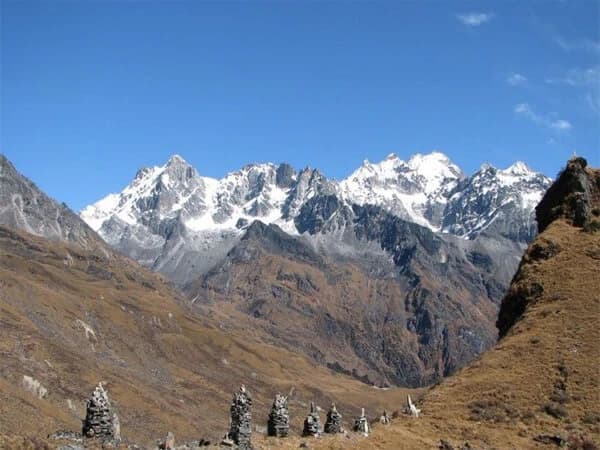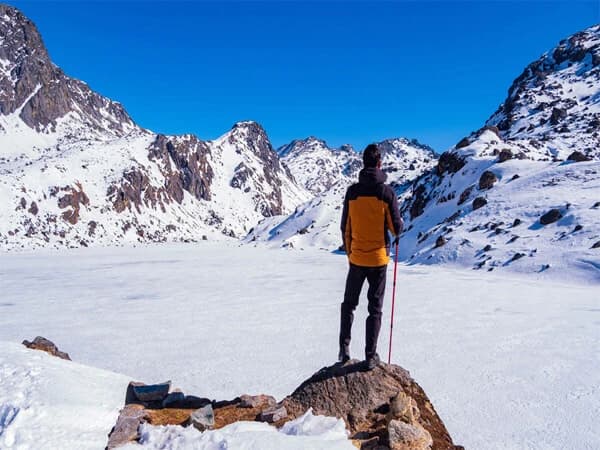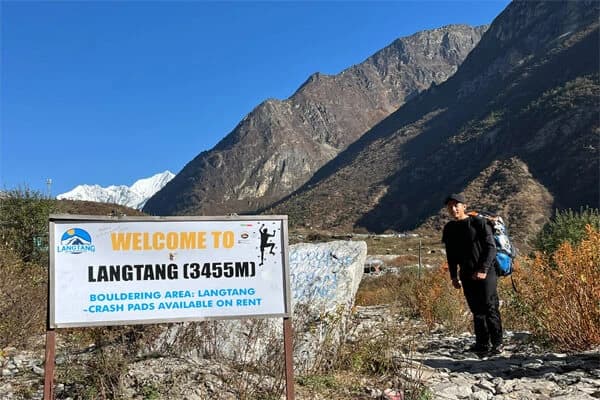Every trekker should consider the Helambu Circuit Trek difficulty before organizing this stunning Himalayan adventure. Whether you're a beginner or someone seeking a quick getaway close to Kathmandu, our site is here to assist you understand what to expect.
After just a day or two of trekking, the Langtang region is renowned for its serene pathways, verdant woods, Tamang and Hyolmo communities, and mountain vistas. Compared to other well-known treks in Nepal, it is frequently referred to as a "soft" trekking route, but that doesn't mean it is simple. Considerations still include long walking days, hard climbs, and altitude variations.
Overview of the Helambu Circuit Trek
The Helambu Circuit Trek is a short yet stunning trek in Nepal. Many people choose it when they don't have much time but still want to enjoy the mountains and nature because it's not too far from Kathmandu. This trek is typically completed in 5–7 days. For novices who wish to attempt trekking for the first time, it's a fantastic option.
Sundarijal, a location close to Kathmandu, is typically where the trip begins. From there, you pass through verdant hills, tiny villages, and beautiful forests. Chisapani, Kutumsang, Tharepati, Melamchi Gaon, Sermathang, and Melamchi Bazaar are among the locations you pass through. You can spend the night in these serene settlements and enjoy hot meals.
At roughly 3,650 meters above sea level, Tharepati is the highest point on this trek. Although it's high, it's not as high as other major treks like Annapurna or Everest. It's a fantastic option for those who are concerned about altitude sickness because most individuals don't find the height difficult.
You will witness Buddhist culture, snow-capped mountains, and green hills while trekking. Particularly in the spring, the trail winds through rhododendron-tree-rich forests. Additionally, you will encounter friendly locals, many of whom are from the Hyolmo and Tamang communities.
For many individuals, the Helambu Circuit Trek is just the right amount of difficult and simple. You sleep in little teahouses along the road and walk for a few hours every day. This trip offers you the opportunity to experience authentic Nepali rural life while taking in the serene surroundings and mountain views. For anyone looking for a straightforward Himalayan adventure, this is a fantastic first trek.
Helambu trekking trail condition
Beautiful hills, tiny villages, and serene woodlands are all part of the Helambu Circuit Trekking. Although there are some challenging sections, the path is not very hazardous. This trek can be an enjoyable challenge if you enjoy walking and don't mind a little uphill and downhill. Let's take a closer look at the trail.
Helambu trek terrain challenges
The majority of the Helambu trek terrain passes through verdant forests that are teeming with trees, birds, and clean air. The trail is easy to walk on and wide in various places. Tall rhododendron trees, which blossom in the spring with red and pink blooms, will be beneath you as you stroll. The trails through the forest are cushiony, with earth and leaves beneath your feet. It resembles a tranquil stroll in the outdoors.
Additionally, you will travel via numerous tiny alpine towns. Friendly locals and stone-paved roads can be found in these villages. There may be occasions when you have to cross fields or go along winding paths between homes. The villages are excellent places to pause, relax, and enjoy regional cuisine, such as dal bhat, which is rice cooked with lentils. The locals are friendly and may wave or grin at you as you walk by.
Stone steps, steep ascents, and descents
There are still some challenging aspects of the Helambu Trek, despite it being simpler than other Nepal treks. The trail climbs steadily uphill in certain spots, so you must travel gently. Particularly if you are not accustomed to trekking, these sections can be exhausting. The good news is that you are free to take as many breaks as you require!
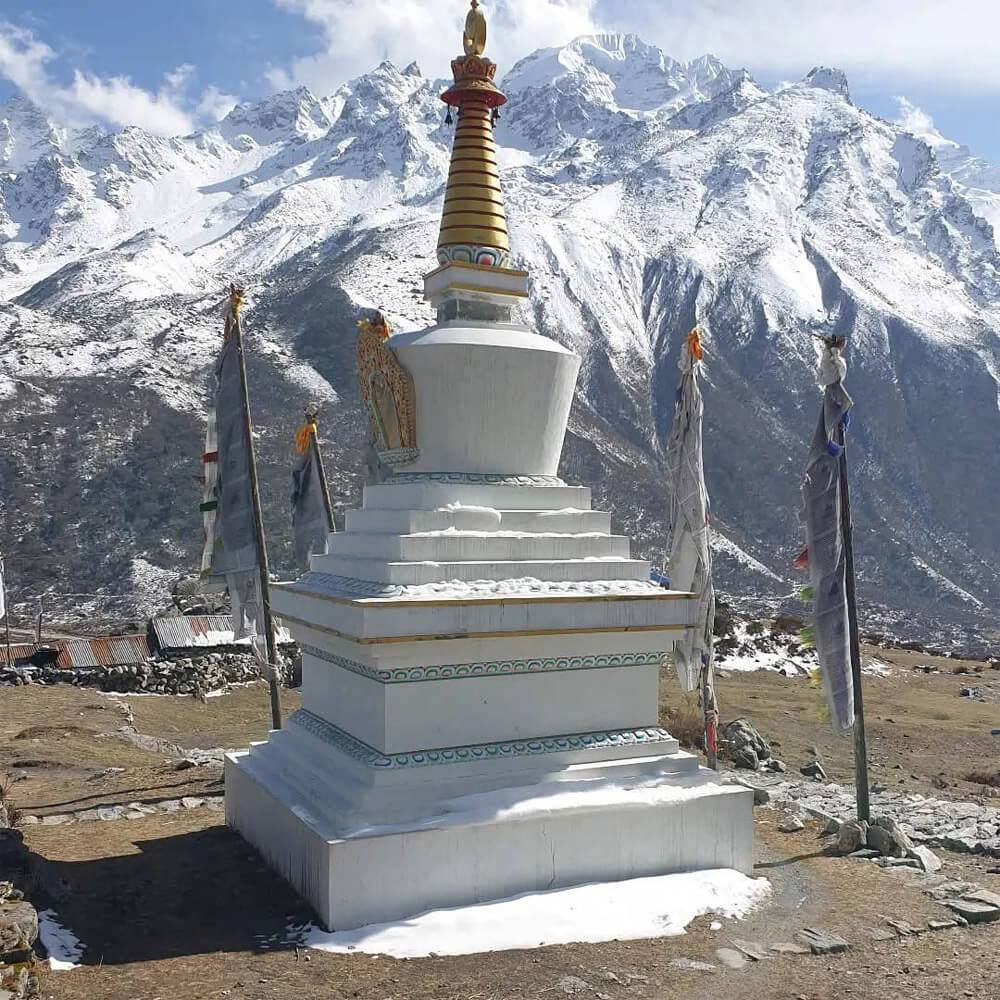
This trek also has a lot of stone steps. There are steps that go up and steps that go down. Good shoes are quite helpful because the stones can get a little slick after rain. Additionally, walking sticks aid balance on uneven terrain.
On hillsides or among rivers, you may occasionally find yourself walking along winding trails. Although some locations are secure, they require some attention and maintenance. You'll be alright if you take it slow and pay attention to your feet.
As a result, the Helambu Circuit path consists of both easy treks and a few minor obstacles. It makes your legs work, but it's not too difficult. With the right mindset, it becomes a beautiful journey through the hills of Nepal.
Altitude and Acclimatization
As you ascend higher in the mountains while walking, the air becomes thinner. As a result, there is less oxygen available for breathing, which occasionally causes nausea. We refer to this as altitude sickness. Let's examine the physical effects of altitude on the Helambu Circuit Trek.
Helambu trek altitude gain
In comparison to other major Nepal trekking like Everest or Annapurna, the Helambu Circuit Trek does not reach exceptionally high altitudes. At about 3,650 meters above sea level, Tharepati is the highest point on this walk. While not overly excessive, that is high. The majority of people can walk this far without becoming seriously ill.
The trek begins at around 1,400 meters, Sundarijal, close to Kathmandu. You climb a little higher every day, passing past hills, villages, and forests. Your body has time to adapt since you get taller gradually. This keeps you feeling fine and facilitates breathing. This is one of the reasons this journey is suitable for novices.
Do You Need Time to Acclimatize?
Acclimatization is the process of allowing your body to adjust to elevated environments. People pause for one or two days in one location to relax and acclimate on extremely high expeditions, such as Everest Base Camp. However, additional acclimatization days are typically not required for the Helambu Circuit Trek.
Most people feel fine because you walk slowly and the height isn't too high. You should still pay attention to your body, though. It's acceptable to take a break or walk more slowly if you experience headaches, dizziness, or extreme fatigue.
Despite the low likelihood of altitude sickness, it's wise to stay hydrated, keep your pace consistent while you walk, eat healthily and get enough sleep. It's preferable to go somewhere lower and rest if you ever feel very ill. The Helambu trekking routes, however, feels ideal for the majority of trekkers not too difficult nor too high. Therefore, in comparison to other treks, the Helambu Circuit has a gentle altitude. If you're new to trekking or concerned about becoming sick at high altitudes, this is a fantastic option.
Physical demand of Helambu trek
How Many Hours a Day Do You Walk?
You typically walk for five to six hours per day on the Helambu Circuit Trek. Some days may be as short as four hours, while others may be as long as seven hours. You don't need to move quickly. You are free to travel slowly, pause, and take in the scenery.
The trails go across open ridges, villages, woodlands, and up and down hills. The trail can occasionally be straightforward and level, but other times it will need you to climb a lot of stone steps or descend rugged terrain. It's not too difficult, but it's also not entirely simple.
After breakfast in the morning, you typically begin your walk. You then make a lunch break en route and arrive at your teahouse (small motel) around afternoon. In the evening, you can relax, sip tea, and take in the views of the mountains.
Fitness required for Helambu trek
To complete this trek, you don't need to be an extremely strong athlete, but you should be active and in reasonably good health. The Helambu Trek is an option if you are able to go for a day trek or stroll for a few hours in your local neighborhood. The secret is to pay attention to your body and move at your own speed.
The trail climbs steep hills in certain places, particularly close to Kutumsang and Tharepati. Therefore, having strong legs and some experience walking uphill prior to the trek is beneficial. You can pause and rest if you become fatigued. There's no hurry.
Beginners, seniors, and children have all completed this route with success. You can hire a porter to carry your belongings instead of carrying bulky luggage. The walk is made easier and more enjoyable as a result.
A few weeks prior to the trek, it's a good idea to walk or engage in mild exercise to get your body ready. In this manner, you'll travel with greater assurance and comfort.
Lastly, for those seeking a moderate challenge, the Helambu Circuit Trek is an excellent option. It's just challenging enough to make you feel proud when you succeed. Every step may be enjoyable if you practice and have a positive outlook!
Weather in Different Seasons
Best season for Helambu Circuit Trek
Every season brings a different set of weather conditions for the Helambu Circuit Trek. Spring (March to May) and fall (September to November) are the ideal seasons to visit. The sun is warm, the sky is typically clear, and the mountain vistas are breathtaking during these months. Additionally, the temperature is agreeable, being cool at night and warm throughout the day.
It rains a lot from June to August. We refer to this as the monsoon season. Walking on the trail becomes more difficult as it becomes muddy and slick. Leeches, which are tiny insects that adhere to your skin, may also be common, particularly in wooded areas. You don't get many nice vistas during this time because the mountains are frequently covered by clouds.
The winter months of December through February are quite cold, particularly at night. Higher elevations, like as Tharepati, may see snowfall, and occasionally the trail becomes dangerous or difficult to navigate. Trekking to Helambu Circuit is still feasible, but you'll need sturdy boots and warm clothing.
Seasonal Challenges for Trekkers
Every season has unique difficulties. The weather is most manageable in the spring and fall. Although there will still be hills to climb, the trail is dry and the weather is ideal for trekking. Because it feels a little safer and easier during certain seasons, many trekkers select them.
It's difficult to stay dry during the rainy season. Your clothes and shoes might get wet even if you have an umbrella and raincoat. Walking on slippery trails might be more exhausting and slower. Leeches and other tiny insects should also be avoided. However, it is a quiet season, and the woodlands appear to be very green.
The cold is the largest obstacle in the winter. To be warm, you must wear a lot of clothes. At higher elevations, some teahouses may even be closed. You must proceed carefully because the trail may be frozen. But with snow all around, the mountains appear stunning.
Therefore, picking the appropriate season for you is crucial. The best seasons to trek are spring or fall if you want a simpler and more pleasurable experience. Clear views of the Himalayas, easier walking, and better weather are all things you can look forward to.
Accommodation and Food Conditions
Where You Sleep: Teahouse Accommodation
You spend the night in tiny guesthouses known as teahouses on the Helambu Circuit Trek. In the villages along the trail, these are operated by local families. A teahouse is comparable to a basic hotel. It features simple rooms that often have a table, two tiny mattresses, and cozy blankets. It can get chilly at night, especially during the winter, because of the thin walls and possibly the lack of heating.
The majority of teahouses have communal restrooms. This implies that in order to locate the restroom, you might need to go outside your room. Hot showers are available in some locations, but they typically cost more. Although the rooms lack style, they are secure and hygienic. It's pleasant to have a dry spot to sleep after a strenuous day of walking.
What You Eat: Simple and Warm Meals
Freshly prepared in the teahouse kitchens, the Helambu Trek's cuisine is hearty and satisfying. Dal Bhat, which consists of rice, lentil soup, vegetables, and occasionally pickles, is the most popular dish. Dal Bhat provides a lot of energy for trekking, so feel free to eat as much as you like.
Noodles, fried rice, pancakes, eggs, soup, momos (dumplings), and tea are among the other meals available. In the villages, you can also purchase food like chocolate or cookies, but the higher you go, the more expensive they get. There are beverages like tea, hot lemon, and coffee, but bottled water is pricey. It is preferable to use water-purifying pills or filters to purify the tap water and to bring a water bottle.
Lastly, simple accommodations and food are a part of the experience. By lodging in their teahouses, you also support local families. You will feel accepted wherever you go if you eat with delight, smile, and express gratitude. Helambu trekking isn't about luxury; rather, it's about the welcoming locals, the serene mountains, and discovering how to live simply.
With or Without a Guide: Does It Affect Helambu short trek difficulty?
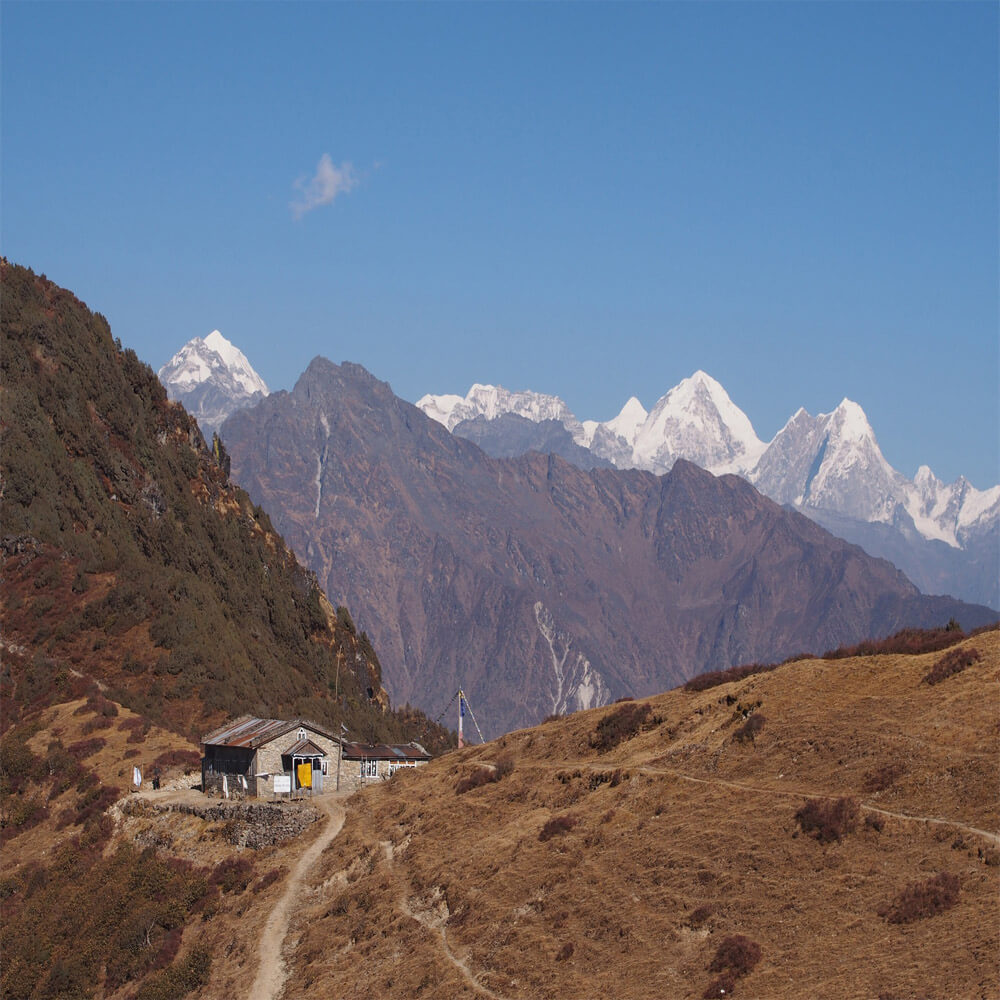
Someone who travels with you on the trail and shows you the way is called a trekking guide. They have extensive knowledge of the highlands. They assist you in locating the best route, dining options, and teahouses for lodging. They also share stories with you about the mountains, people, and communities. You're not alone if you have a guide.
There are a lot of signs and trails along the Helambu Circuit Trek, however some of them can be perplexing. There are little paths that go through communities and woodlands. You risk getting lost or walking too far if you are trekking alone and miss a turn. You won't have to worry about directions if you have a guide. Even if there are no markers or the trail splits, they know where to go.
Trekking With a Guide: Easier and Safer
The trek feels safer and easier when you walk with a guide. The guide can assist you in planning a shorter path if you're feeling exhausted. They know what to do if you become ill or want assistance. If you don't speak Nepali, they also assist you in communicating with locals. Guides can assist you with ordering food, booking accommodations, and carrying a first-aid kit. You may therefore relax and enjoy the walk and the scenery.
Trekking Without a Guide: More Helambu trek technical challenges
For greater adventure, some people choose to stroll by themselves. If you are strong, cautious, and accustomed to trekking, that is OK. You will have to read maps, carry your own bags, and seek assistance if you need it. You have to make your own hotel reservations and strike up conversations with locals in tiny towns if you don't have a guide. It's more work and occasionally a little frightening, but it can also be enjoyable.
What’s Best for You?
Trekking with a guide is a wise decision if this is your first excursion or if you want to unwind and feel secure. It adds enjoyment, safety, and ease to the journey. Going without a guide is feasible if you have experience trekking and prefer independence, but you will need to be well-prepared. Either option is okay in the end; just do what makes you feel content and secure among the mountains.
Difficulty comparison with Other Treks
Helambu trek difficulty level: Easy and Peaceful
One of the simpler treks in Nepal is the Helambu Circuit Trek. The walking trails are generally clear and safe, and it doesn't get too high. You don't have to cross any extremely steep or hazardous mountain passes as you travel through hills, villages, and forests. For those who are interested in trekking in the Himalayas for the first time, this is an excellent excursion.
Helambu vs Langtang Trek Difficulty
Helambu is lower than the Langtang valley Trek. It features harder climbs and takes longer. You can get to locations like Kyanjin Gompa in Langtang, where the air is colder and thinner. You also walk close to tall mountains and glaciers. Langtang is a little more difficult than Helambu due to its elevation, therefore it could require greater fitness.
Helambu vs Annapurna Base Camp Trek
Over 4,000 meters is the elevation gain of the lengthier Annapurna Base Camp (ABC) Trek! Particularly at the end, the trails and steps can be extremely steep. Because you have to adjust to the high altitude and walk for longer periods of time each day, it's more challenging than Helambu. ABC is intended for those with prior trekking experience.
Helambu vs Everest Base Camp Trek
Compared to Helambu, the Everest Base Camp (EBC) Trek is far more difficult. At the peak, the air is extremely thin, it travels over 5,300 meters, and it takes about 12 to 14 days. The altitude causes fatigue and nausea in many people. It requires more time, strong legs, and good health because it's a major challenge. Helambu is much simpler than EBC.
Helambu vs Easy Treks Near Kathmandu
Even easier treks than Helambu include those in Nagarkot, Shivapuri, and Champadevi. These are day treks, meaning you only walk for one day. They don't require permits or guides, and they don't get high. Helambu is easier than large treks, but it's still more than a quick trip.
Finally, if you are looking for a trek that is easy, scenic, and near Kathmandu, the Helambu Circuit Trek is a good option. It's easier than most high mountain treks, but more difficult than short day treks. Helambu is an excellent place to start trekking if you've never done it before!
Some of Frequently Asked Question
Is Helambu Trek beginners-friendly?
Yes, it's among the top treks in Nepal for novices. The trail does not climb very high, and the walking days are brief. Most people who enjoy trekking and have a basic level of fitness can finish it.
How hard is the Helambu Circuit trek?
You will walk for five to six hours every day. There are strong slopes in certain places, particularly close to Tharepati and Kutumsang. However, for those who are accustomed to walking, the trail is safe and not too challenging.
Do I need to worry about altitude sickness?
Not at all. At Tharepati, the highest point is about 3,650 meters, which is not that high. Even if most individuals don't feel bad, it's still a good idea to take it slow and stay hydrated.
Does the trek become easier if I have a guide?
Although not necessary, a guide is beneficial. In certain places, trails might become confusing. A guide can also help with language, local culture, and locating quality teahouses.
How to train for Helambu trek for seniors?
A few weeks prior, it is sufficient to engage in regular walking, jogging, or light trekking. You only need to be healthy enough to walk every day; you don't need to be young or athlete.
Conclusion: Helambu circuit trek difficulty
One of Nepal's simplest and most approachable treks is the Helambu Circuit Trek. It provides a variety of modest climbs without reaching very high elevations, hillside communities, and mild woodland routes. Although there are days with long hours and hilly walks, the expedition doesn't call for highly skilled or physically fit individuals. Most people may enjoy this beautiful excursion if they have the correct attitude, prepare a little, and walk at a steady pace.
The trek is made much easier by making a reservation with Nepal Trekking Routes. Along the route, their knowledgeable guides assist you with trail navigation, pace management, and cultural immersion. Additionally, they handle the logistics, such as lodging, permits, and meals, which lessens stress and increases your ability to appreciate the beauty of nature.
The Helambu Circuit is a fantastic option if you're searching for a quick, serene, and manageable Himalayan trek close to Kathmandu. Nepal Trekking Routes is a trustworthy guide to help you along the way.




